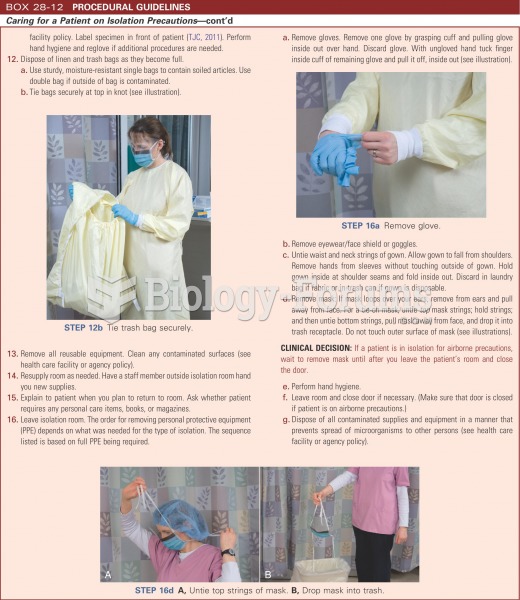Answer to Question 1
C
The nurse used diagnostic reasoning to arrive at a nursing diagnosis. During diagnostic reasoning, the information a nurse collects and analyzes leads to a diagnosis of a patient's condition. Nurses do not make medical diagnoses; they make nursing diagnoses. The scientific method is one formal way (in this scenario the nurse did not use the formal approach) to approach a problem, plan a solution, test the solution, and come to a conclusion; it is usually used in research. Data collection is a component of assessment in the nursing process. In diagnostic reasoning you use patient data that you gather or collect to logically identify a problem. The nurse in this scenario is past data collection and has made a nursing diagnosis: Impaired Swallowing.
Answer to Question 2
A
The patient most at risk is the teenage comatose patient on a ventilator lying supine. When the patient is in bed, the kidneys and ureters move toward a more level plane, and urine tries to move from the kidney to the bladder against gravity. Because the peristaltic contractions of the ureters are not strong enough to overcome gravity when the patient is reclining, the renal pelvis fills before urine enters the ureters, which increases the patient's risk for urinary tract infection (UTI) and renal calculi. The elderly adult with Alzheimer and the middle-age adult post cardiac catheterization are both upright, which decreases chance for UTI. The middle-age adult after abdominal surgery is sitting in a chair, which decreases chance for UTI because gravity is helping the ureters drain.







